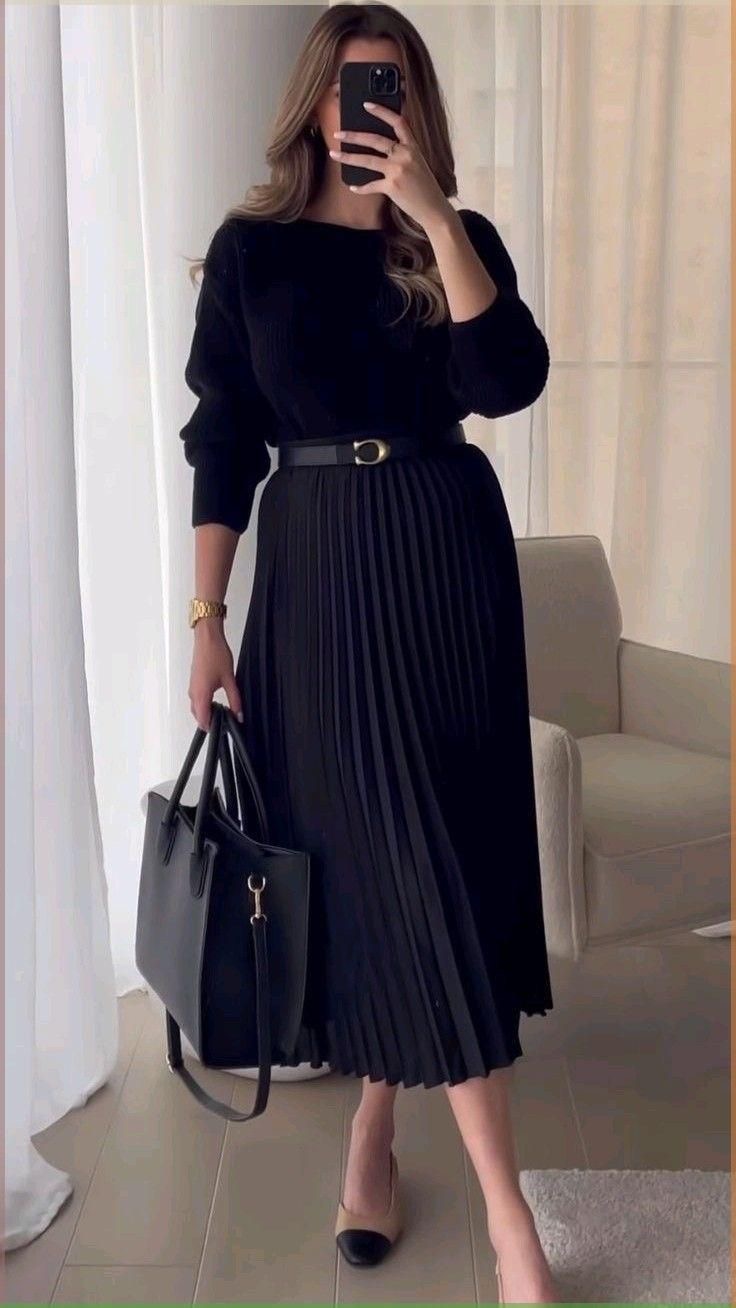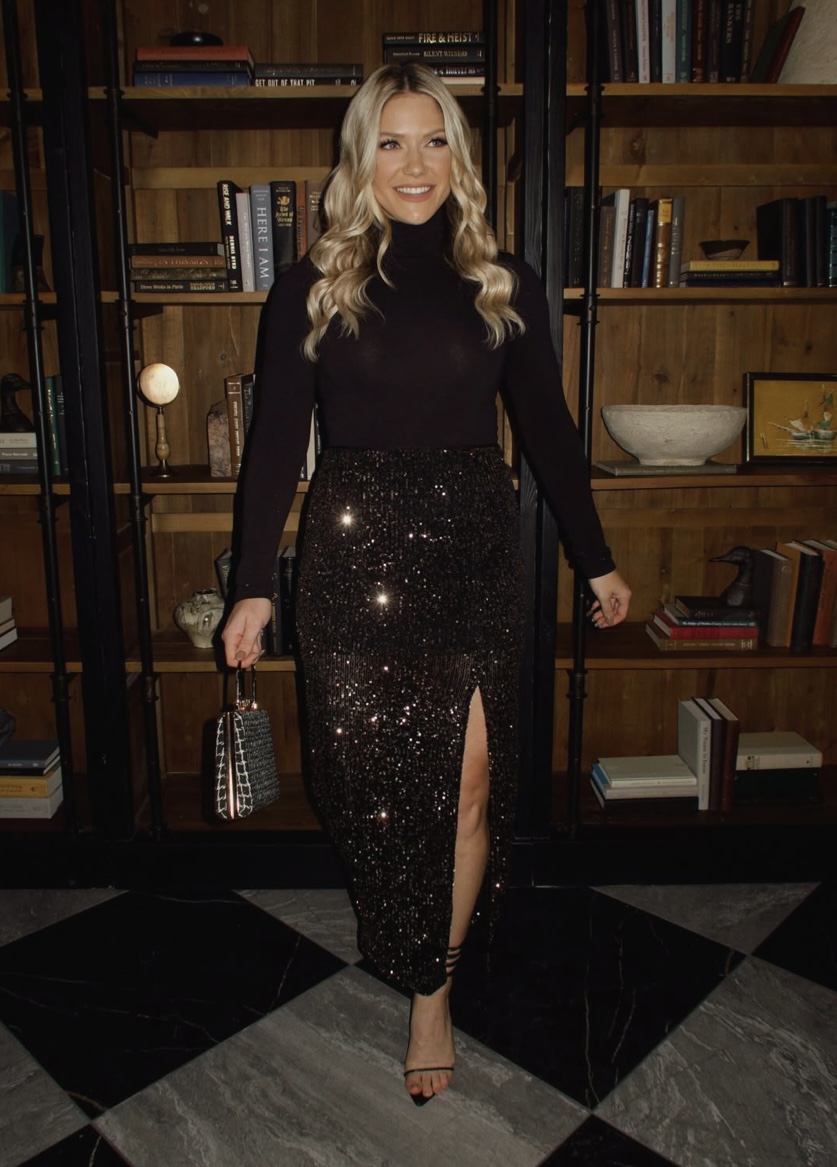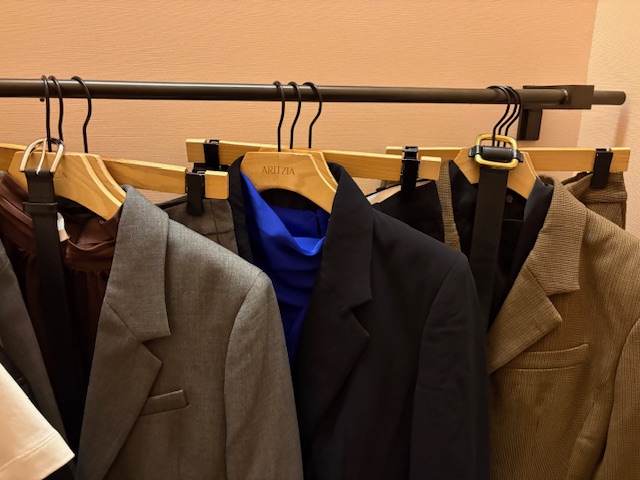.jpeg)
So, you've polished your resume and practiced your answers. But what about your outfit? Before you say a single word, what you wear has already started the conversation. It sends a powerful message about your professionalism and respect for the opportunity.
Getting it wrong can undermine all your hard work. This guide will help you avoid some common fashion mistakes. We’ll show you exactly what to leave in your closet. Understanding what not to wear to an interview is the first step to feeling prepared and confident.
Need a little extra help? A virtual fashion stylist can curate looks that match your career goals. Let's make sure your clothing opens doors, not closes them.
1. Overly Casual Clothing (Jeans, T-Shirts, Sneakers)
Wearing casual clothes is the quickest way to signal you're not taking the interview seriously. Your outfit is the very first project you submit to a potential employer. It should be thoughtful and professional.
Clothing like jeans, graphic t-shirts, and sneakers scream "weekend," not "workplace." Even if the company has a relaxed dress code, the interview itself is a formal occasion. Dressing up shows respect for the interviewer's time.
How to Get It Right
Figuring out what not to wear on an interview can be tricky, but here’s how to nail it.
- Do your homework, then level up. Check the company's website or LinkedIn for photos of the team. Your goal is to dress one step above their daily standard. For example, if they wear jeans, you should wear smart trousers or a skirt.
- Create a go-to interview outfit. A reliable look removes last-minute stress. Try tailored trousers, a simple blouse, a structured blazer, and closed-toe flats.
- When in doubt, overdress. It’s always better to be the most dressed-up person in the room. Showing up in a blazer when others are in sweaters shows you're serious.
- Aim for smart casual, not sloppy. For a tech or creative role, think "smart casual." Instead of a faded t-shirt, pair dark-wash jeans (only if you're sure it's okay!) with a blazer and polished loafers.
2. Revealing Clothing
Your interview outfit should spotlight your professional skills, not your body. Clothing that is too tight, short, or sheer can make the interviewer uncomfortable. Your expertise should be the center of attention.
Leave the low-cut tops, mini skirts, and sheer blouses at home. This isn't about old-fashioned rules; it's about smart communication. Your clothes should say "confident and capable."
How to Get It Right
Knowing what not to wear on an interview helps you build a look that's memorable for the right reasons.
- Do the "sit and bend" test. Before you leave, sit down in your outfit. Does your skirt ride up too high? Does your blouse gape? Bend forward to check your neckline. This prevents any awkward moments.
- Watch your hemline. The safest length for skirts and dresses is at or just below the knee. It's polished and you won't have to worry about it being too short when you sit down.
- Layer up for a polished look. A well-fitting blazer or cardigan is your best friend. It instantly adds professionalism and provides extra coverage over a simple top.
- Check for sheerness. Always check your outfit in bright light. A blouse might look fine at home but become see-through under office lights. Wear a camisole underneath just in case.
3. Excessive Jewelry and Accessories
Your accessories should complement your look, not compete with it. Too much jewelry or noisy pieces can be distracting. You want the interviewer focused on what you're saying.
The rule is simple: your skills should be the most memorable thing about you. Not a jangling stack of bracelets. Your accessories should enhance your professional look, not overpower it.
How to Get It Right
Choosing the right accessories is a key part of a polished interview outfit. Here's how to do it.
- Follow the "take one off" rule. This classic advice is perfect for interviews. Before you leave, look in the mirror and remove one accessory. This keeps your look refined, not overdone.
- Pick one statement piece, max. Love bold jewelry? Limit yourself to just one. For example, wear a statement necklace or statement earrings, but never both.
- Think delicate stud earrings.
- A simple, thin necklace.
- A classic watch.
Do a sound check. Move around in your jewelry. If your bracelets clank or your earrings jingle, leave them at home.
Keep facial piercings minimal. For conservative industries, it's best to remove visible facial piercings. They can be a distraction in traditional office settings.
4. Strong Fragrances and Heavy Perfume/Cologne
Your qualifications should leave the biggest impression, not your scent. Strong perfume can be very distracting in a small interview room. A scent you love might be overpowering to someone else.
Many offices are now scent-free zones. This is to protect people with allergies or sensitivities. Wearing a heavy fragrance can make you seem inconsiderate.
How to Get It Right
Deciding what not to wear to an interview extends to fragrance. Here's how to get it right.
- Go scent-free. The safest choice is to skip perfume and cologne completely. Clean and fresh is all you need.
- Check all your products. Scented lotions, hairsprays, and even laundry detergents can add up. Opt for unscented versions for interview day.
- Less is always more. If you absolutely must wear a scent, be very careful. One tiny spritz on your wrist 30 minutes before you arrive is enough.
- Prioritize being clean. A shower with mild soap is the best way to smell fresh. Clean clothes and good hygiene make a much better impression than perfume.
5. Wrinkled, Stained, or Ill-Fitting Clothing
The details really matter. Showing up in a wrinkled or stained outfit suggests you didn't prepare. It can communicate a lack of care for the opportunity.
Your clothing's condition reflects your personal standards. A crisp, well-fitting outfit shows you're organized and meticulous. These are great professional traits.
Clothes in poor condition can make you look disorganized. A coffee stain or a jacket that's too big can raise questions. It might suggest you have a "good enough" attitude, which isn't what interviewers are looking for.
How to Get It Right
Making sure your outfit is perfect is a must. Here’s how to look polished and professional.
- Do a full dress rehearsal. Try on your entire outfit a couple of days before the interview. This gives you time to spot any issues, like a loose button or a small stain.
- Make it crisp and clean. Iron or steam your outfit the night before. Check it carefully for any marks. Hang it up so it stays fresh.
- Jacket seams should hit right at your shoulder.
- Sleeves should end at your wrist bone.
- Trousers shouldn't be too long or too short.
Do the 'sit test.' Sit down in your outfit to make sure it's comfortable. You don't want a blouse that gapes or a skirt that rides up. When you're comfortable, you're more confident. For more guidance, you can learn more about how to dress for your body type on isabellastyling.com.
Get it tailored. A tailor can make a good outfit look great. Spending a little to get your blazer or trousers altered is a smart investment.
6. Inappropriate Footwear (Loud Colours, Open-Toes, Excessive Heels)
Your shoes are a final detail, but they can be one of the first things people notice. The right pair makes you look professional. The wrong pair can hurt your credibility.
Shoes like open-toed sandals, sky-high stilettos, or bright sneakers are distracting. Your shoes should match the formal, professional setting. Polished, conservative footwear is always the right choice.
How to Get It Right
Choosing the right shoes is a crucial final step. Here’s how to make the best impression.
- Always choose closed-toe shoes. This is the golden rule. Closed-toe shoes are always more professional. For example, classic pumps, elegant flats, or polished loafers.
- Stick to neutral colors. Black, navy, grey, and brown are your safest options. They match professional outfits and keep the focus on you.
- Keep heels at a reasonable height. If you wear heels, aim for one to three inches. You need to be able to walk confidently. A block heel is often more comfortable than a stiletto.
- Make sure they are in great shape. Your shoes must be clean and free from scuffs. Give them a quick polish before you leave. This small detail shows you're prepared.
- Comfort is key. Never wear brand-new shoes to an interview. Discomfort is distracting. Make sure you can walk in your chosen pair with ease.
Dress for the Job You Want, Starting Now
Knowing what not to wear to an interview is simple. It all comes down to showing you care. Your outfit is the first thing a hiring manager sees, so make it count.
Think of it as strategic communication. When you avoid casual items and distracting accessories, you're telling a story of competence and attention to detail. This lets your skills and experience be the star of the show.
Key Takeaways for Your Next Interview
Your goal is to look polished, confident, and distraction-free.
- Choose polish over personality. Let your personality shine in your answers, not your outfit. Avoid loud patterns or anything too revealing.
- Fit and finish are most important. A well-fitting, wrinkle-free outfit always looks professional. Check for stains, loose threads, and scuffs.
- When in doubt, dress up. It's always better to be slightly overdressed. A classic blazer and tailored trousers are a safe and powerful choice.
- Don't forget the other senses. Avoid strong perfumes and noisy shoes. You don't want anything to distract from your conversation.
By mastering what not to wear on an interview, you are taking control of your professional story. You're showing respect and letting your qualifications shine.
Feeling overwhelmed by wardrobe decisions? Let's build your career-defining look together. At Isabella Styling, I help busy Calgary professionals create polished, confidence-boosting wardrobes for interviews and beyond. Book a consultation today and walk into your next opportunity feeling unstoppable.


